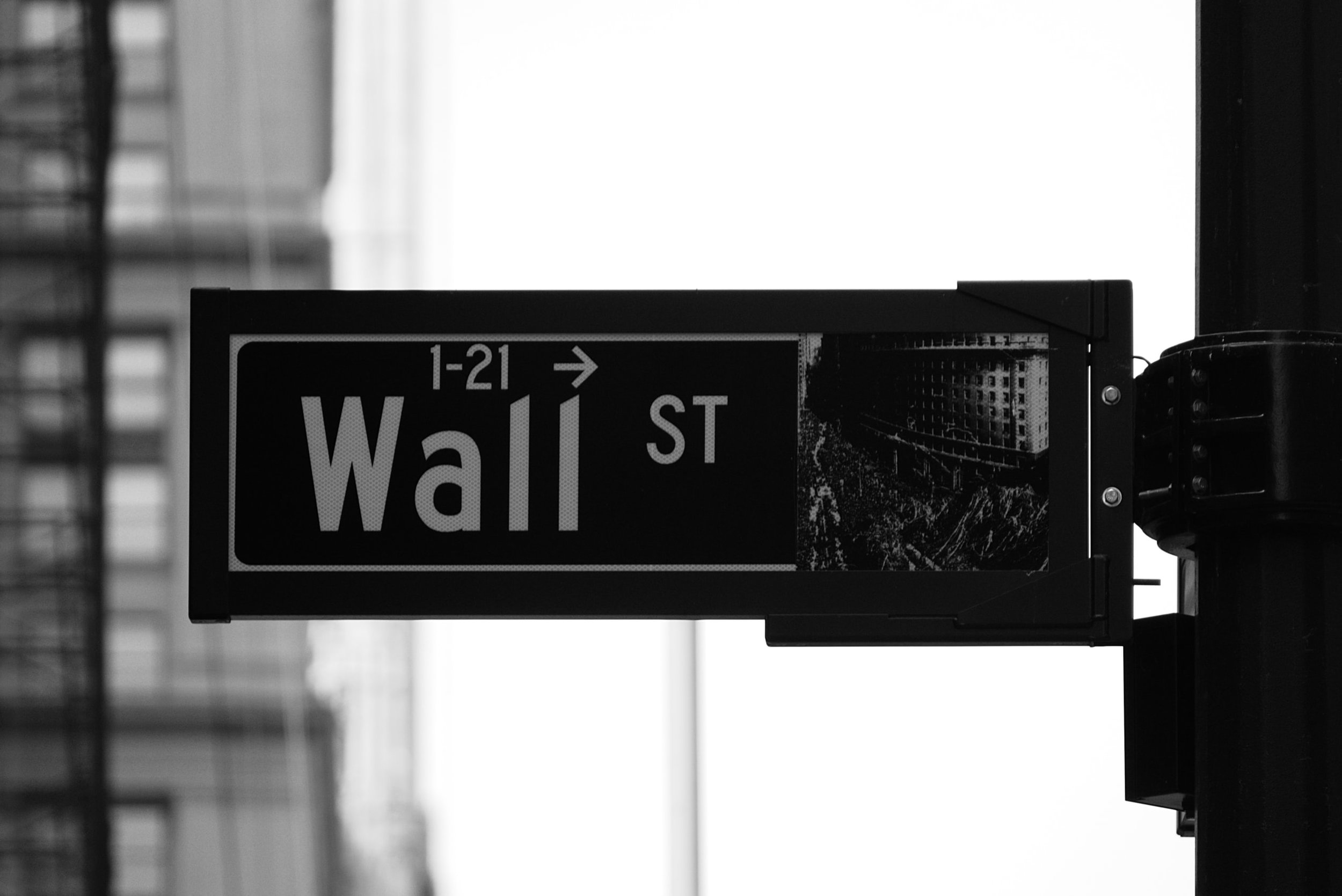Addiction on Wall Street

THE FIX
MARCH 2012
High-profile, cocaine-fueled meltdowns are old hat on Wall Street. The truth is, finance is more haunted than ever by addiction, compulsions and eating disorders. Here's why.
Aside from the occasional headline-making tragedy, Wall Street’s drug use is a lot like Wall Street itself: very insider, very hush-hush, and usually very high-end—until of course it isn’t anymore. No one has bothered—or been allowed—to study the problem up close or over an extended period, and the little we mortals hear about it usually comes in the form of the occasional drug bust. But now, a remarkable 10-year-long study has peeled back the glass partitions on the Street and confirmed the worst fears about drug abuse in the cathedrals of high finance. A University of Southern California researcher, who was once herself a Wall Street banker, followed more than two dozen freshly minted MBA’s from the boot camps, or “grind mills,” of investment banks as they clawed their way toward wealth and absolute power. By the fourth year in business, they had succumbed to a litany of out-of-control behavior.
“People working 120 hours a week, for prolonged periods of time, go through harsh psychological transformations,” says Alexandra Michel, a professor at USC’s Marshall School of Business, who findings appear in the current Administrative Science Quarterly.
The stress of grueling workdays and juggling other people’s billions turned the body “antagonistic,” says Michel, bringing on compulsive drinking, drugging and depression. “What people really want is to feel alive and to feel some energy course through their bodies,” says Michel, an anthropologist who shadowed her subjects in their cubicles and personal lives. “When the body shuts down, substance abuse is an attempt to feel alive.”
Michel hadn’t set out to study Wall Street’s addictions. Her research examines how organizations influence white-collar workers’ psychological processes and performance. She is particularly interested in the way knowledge-based workers—not just on Wall Street, but in the media, law, consulting, technology and countless other fields—perceive themselves as autonomous, but in fact they are under unspoken organizational control.
That control is veiled by the perqs offered to white collar workers. “The bank erased distinctions between work and leisure by providing administrative support 24 hours a day, seven days a week, encouraging leisure at work, and providing free amenities, including childcare, valets, car service, and meals,” Michel writes. “Some of the banks’ embodied controls focused on managing employees’ energy and included providing free caffeine and meals during ‘‘energy slumps,’’ hiring young people, focusing on energy as the main hiring criterion, and firing low performers because of their energy drain.”
As they became overtaxed, 80 percent of Michel’s workers said they were struggling to control their bodies. As one vice president put it: “I wouldn’t call it control; I am at war with my body.” They were also at war with their private lives. Michel saw highly educated and highly motivated people willing to miss a child’s birthday or cancel on parents visiting from overseas to instead help with a client’s hostile corporate takeover.
To cope, bankers developed addictions and compulsions, such as eating disorders, as well as embarrassing tics, such as nail biting, nose picking and hair twirling. Normally mild-mannered people flew into out-of-control rages at the least provocation. As one bank associate in Michel’s study recalled of an embarrassing episode on the street: “I stormed toward the taxi, but the door was locked. The driver wanted to unlock it but couldn’t because I kept operating the handle. I became so furious that I kept banging against the windows like crazy, swearing at the poor guy. And then I turned around and saw that a managing director was watching with his mouth open. I was so ashamed.”
While popular culture teems with images of the coke-snorting Wall Street hot shot, the reality these days is as grim as a Florida pill mill. Like millions in society’s addicted class, hedgies are hooked on prescription pain killers.
To maintain their performance, bankers pushed harder, trying to reassert control over their bodies, writes Michel: “One banker combated her eating disorder by fasting and exercising more, training for a marathon even after midnight.” Bankers sought distraction through compulsive shopping, partying and watching porn to counteract the numbness (‘‘I need something to feel passionate about”), to achieve control (‘‘These are all ways to control something’’), and to escape (‘‘It is a way to escape, so that I cannot even ruminate about my problems if I wanted to’’).Addiction and self-flagellation went hand in hand. One banker said, ‘‘The only way I can keep myself up nights in a row is through a mix of caffeine pills and prescription meds.’’ She even ignored serious injuries to her body. ‘‘I fell on my way to a meeting,” she recalled for Michel. “The leg changed color and I had pain but I chose not to think about it until after the meeting.’’ Her leg was actually broken in two places.
When Michel saw signs of alcoholism and drug use, and asked her subjects about it, they were quick to deny any emotional problems or psychological connections. “People would tell me ‘it’s my choice, it’s not a personality flaw,” says Michel. She would not name specific drugs used by the bankers or say if she saw drug use firsthand because she did not want to further stigmatize the industry, where she had once worked herself. “To them, substance abuse was a way to push the body further and to medicate the body.”
Not that it was working for them. One vice president who struggled with addictions told a familiar story: “These problems [with alcoholism] are really getting to me. When I talk to clients or even in the firm all I keep thinking about is whether people notice [the drinking problem] and I keep losing half of what they are saying.’’ A vice president at another bank struggled to overcome his addictions, and failed time and again: ‘‘I sometimes wake up in the morning and remember what I have done the day before and wished that it was just a bad dream and all I want is to keep it together for the day ahead and not allow my body to take over again.’’
Of course, people on Wall Street—and those in other knowledge-based industries where risk-taking is prized—often feel entitled to use and abuse drugs and alcohol. They feel they’ve earned the right. As long as they pull in the bucks, what does it matter? They are also adept at masking their addictions and the culture helps normalize crazy behavior. The people around them—peers and bosses—often look the other way. “It’s a gunslinger mentality, says Robert Curry, fonder of Turning Point For Leaders, a Connecticut-based intervention and rehab company who has worked with hedge fund partners and bankers.
That outlaw mentality is difficult to break down because it is so antithetical to the philosophy of recovery, which requires vulnerability, trust, emotional openness and admitting powerlessness in the face of addiction. “These guys are highly intelligent, and they are used to being in control,” says Curry. “These are world beaters. One-Percenters. They call their own shots and the idea that they can’t manage something like alcohol or Ambien or other prescription drugs is something that they don’t really want to face.”
Even when Wall Streeters have climbed to the top of their fields, have managed to race through the war zone of stress and bodily punishment and somehow come out on top with a fat bag of money like the Monopoly man, they are vulnerable to addiction’s ravages. The economic meltdown of 2008 hasn’t helped them, but not for the reasons you think. High-finance intervention specialists, like Curry, have seen an uptick in drug abuse on Wall Street since 2008. It’s not necessarily because these guys are stressed. Just the opposite: It’s because many of them are bored. This is particularly so in the waterfront enclave of Greenwich, CT, where Curry plies his trade amid multi-million dollar mansions and country club ennui. “They have the ex-wife or two, the grown children from different marriages, the mortgages and too much time on their hands,” says Curry. “Normally their social lives and family lives are a mess long before I ever get the call. And it’s not until the income starts to be threatened and then a business partner or a wife says, ‘Hey you know what we better do something here.’”
Curry’s four-person team of psychologists, psychiatrists and social workers, all trained in substance abuse issues, perform a half dozen or so full-blown interventions a year, at a cost of up to $30,000 each. If that doesn’t seem like a lot of interventions, consider that Curry’s team takes months setting the net, interviewing partners, college buddies, and family members. “This is elephant hunting,” he says. “These are big guys.”
While popular culture teems with images of the whiskey-swilling, coke-snorting Wall Street hot shot, the reality these days is as grim and downmarket as a Florida pill mill. Like millions of others in society’s addicted class, plenty of the hedgies are hooked on prescription pain killers. This is particularly true of the older and established thinning-hair set. “A guy’s in his late forties or early fifties and he gets knee surgery from a running injury, or he get tennis elbow or he gets some teeth capped and his doctor gives him Oxycodone,” says Curry. “Well, guess what? That feels pretty good and he keeps getting them. Or he’s prescribed Ambien to help him sleep on those international flights or Xanax to calm his nerves for a takeover. Next thing you know, it’s 60 pills a month.”
Even when intervention is successful, the results are hushed up, more so than in any other profession. Unlike other high-profile players, like rocks stars and certain actors where drug abuse can improve your brand, no one wants his investment banker smoking crack and then handling his millions. Also, in the backstabbing world of high finance, the other guy will readily use that against you, to, say, steal your client if given the chance.
“They are often trapped by the curious mechanics of this culture,” says Michel, who is quick to point out that other knowledge-based industries mimic Wall Street’s behavior, which the media enshrines in portraits of the business titan who never sleeps and who works round the clock to win at any cost. “People tend to categorize this as thinking for a living and forget the tremendous cost it has on our bodies and our psyches. This a conversation that needs to happen at the organizational level and the social level. Because this is not just a trend going on on Wall Street. We are pushing our bodies to the brink and the body is forcing us to live outside our minds.” Often through mind-blowing drugs.




